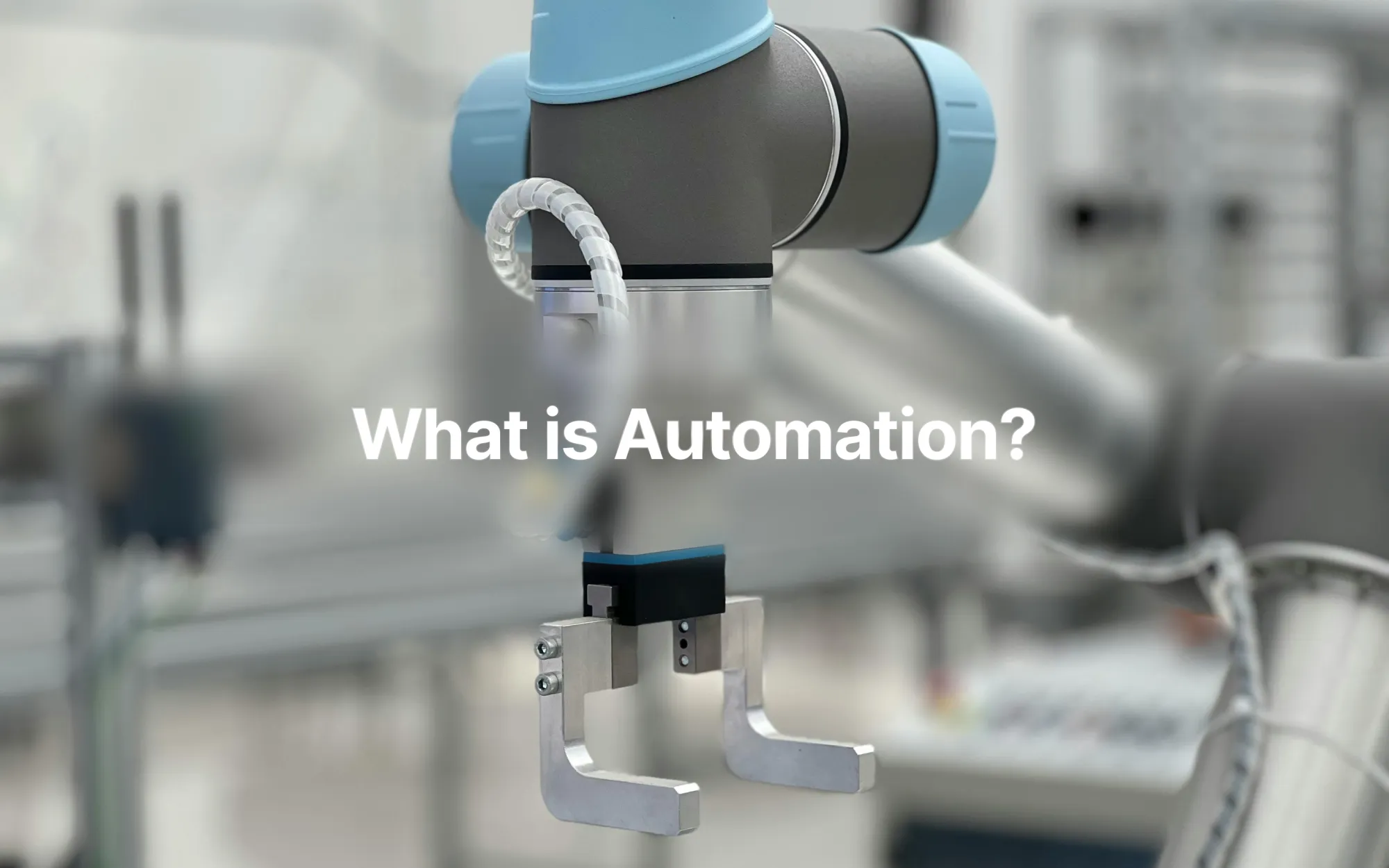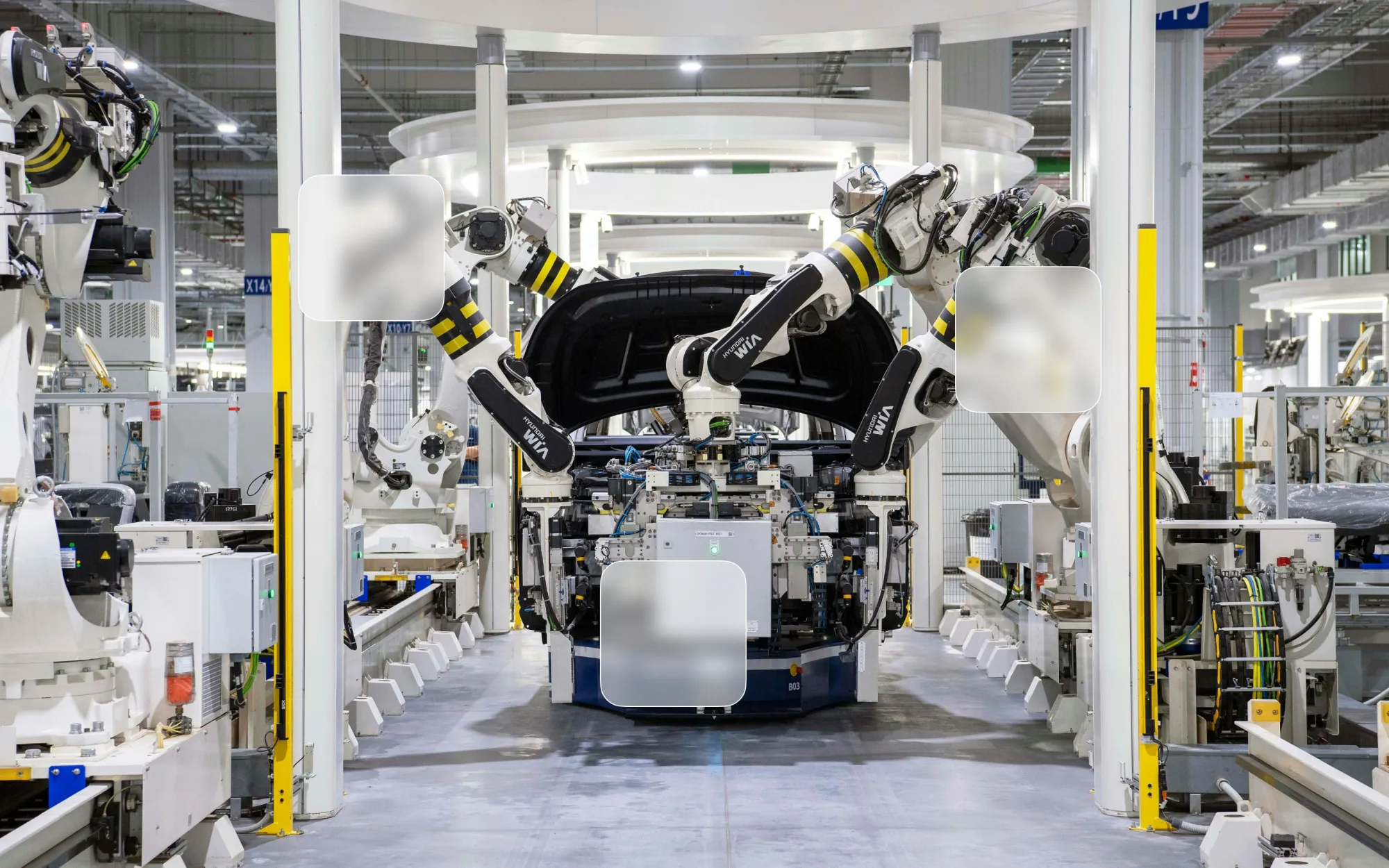What Are the 4 Types of Automation? A Complete Guide
Explore the four types of automation in our complete guide and learn how each can enhance efficiency and streamline your business processes.

Automation has become a buzzword across industries, but what exactly is automation? And more importantly, why should businesses care about it?
Automation refers to the use of technology to perform tasks or processes without human intervention. It allows businesses to streamline operations, reduce errors, and improve productivity.
Whether it’s manufacturing, healthcare, logistics, or retail, automation is reshaping how industries operate, making processes faster, more efficient, and cost-effective.
But not all automation is created equal. There are four main types, each serving different needs depending on the industry and the tasks' complexity. These include fixed, programmable, flexible, and integrated automation, each with unique characteristics and applications.
Understanding these types is important for businesses seeking to stay competitive and improve efficiency. By choosing the right form of automation, businesses can scale their operations, optimize resources, and ultimately increase profitability.
In this guide, we’ll break down the four types of automation, providing insights into how each can benefit your business.
What is Automation?
Automation is the process of using technology to complete tasks with little to no human involvement.
This can range from simple tasks like sending automatic emails to complex processes like building cars in a factory. The goal of automation is to make work faster, more efficient, and less reliant on manual labor.
Automation has come a long way over the years. In the past, most work had to be done by hand, requiring a lot of time and effort. But as technology advanced, machines were invented to help people do things faster and with more precision.
The industrial revolution marked a major shift, with factories using machines to speed up production. Later, the rise of computers and robots allowed automation to take on more complex tasks.
The 4 Types of Automation

Automation isn’t a one-size-fits-all solution. Depending on the needs of a business, there are four main types of automation, each designed to handle different kinds of tasks.
Let’s break down each type, explain how they work, and highlight their benefits and drawbacks in simple terms.
a. Fixed Automation (Hard Automation)
Fixed automation is designed for producing large quantities of a single product in a highly efficient manner. It uses machines that are pre-programmed to perform specific tasks repeatedly. Once set up, these machines can work non-stop, producing the same item over and over.
Example: Think of an assembly line in a car factory. The machines are programmed to assemble the same car model, performing tasks like welding, painting, or attaching parts.
Advantages:
- High production rates: These machines can produce a large number of items very quickly.
- Low unit cost: Since the process is efficient and fast, the cost of producing each item is relatively low.
Disadvantages:
- Inflexibility: Fixed automation is not easily adaptable. If you want to change the product being made, you’d need to reprogram or replace the machines.
- High initial cost: Setting up fixed automation can be expensive because it requires specialized equipment.
b. Programmable Automation
Programmable automation is more flexible than fixed automation. It’s designed for producing batches of products, meaning it can handle different products, but you’ll need to reprogram the machines each time you switch to a new product.
Example: CNC (Computer Numerical Control) machines or industrial robots that can be programmed to create different types of products like parts for cars, planes, or electronics.
Advantages:
- Flexibility: Programmable automation allows you to create different products by changing the machine’s program.
- Cost-effective for small batches: It works well for businesses that don’t need to mass-produce a single item but still want automation.
Disadvantages:
- Reprogramming needed: Every time a new product is introduced, the machines need to be reprogrammed, which can take time.
- Medium initial cost: The equipment is more affordable than fixed automation but still requires investment.
c. Flexible Automation (Soft Automation)
Flexible automation takes things a step further by being able to produce different products without needing to stop and reprogram the machines manually. This means the system can adapt to new tasks or products on its own, making it extremely versatile.
Example: Robotic arms used in warehouses that can automatically switch between packing different types of products, or automated guided vehicles (AGVs) that can move materials around without needing human input.
Advantages:
- Adaptability: Flexible automation can switch between tasks quickly without human intervention, making it ideal for environments where products change often.
- Efficiency: This type of automation helps businesses remain productive even when handling different products or tasks.
Disadvantages:
- High cost: The technology is advanced and therefore more expensive.
- Complex setup: Flexible automation requires sophisticated systems that can handle multiple tasks at once.
d. Integrated Automation
Integrated automation is the most advanced type of automation. It involves connecting all machines, systems, and processes in a business so they can communicate and work together without human involvement. It’s often referred to as a "smart factory" because everything is controlled and monitored automatically.
Example: Smart factories, where machines, sensors, and software work together to manage the entire production process, from receiving materials to shipping finished products. This is a key part of Industry 4.0, where everything is connected digitally.
Advantages:
- End-to-end automation: Integrated automation allows businesses to automate every step of the production process, reducing the need for human oversight.
- Increased efficiency: The system can monitor itself, detect problems, and make adjustments in real-time, improving overall productivity.
Disadvantages:
- High upfront cost: Setting up an integrated automation system requires significant investment in technology and infrastructure.
- Complex setup: It requires advanced software and hardware, which can be challenging to install and maintain.
Benefits of Automation in Business

Automation has transformed the way businesses operate by taking over repetitive tasks, streamlining processes, and improving accuracy. Let’s break down some of the key benefits of automation and how it can help businesses succeed.
1. Increased Productivity and Efficiency
One of the biggest advantages of automation is that it boosts productivity by allowing machines to handle tasks that would otherwise take humans much longer to complete.
Automated systems can work around the clock without needing breaks, rest, or sleep, which means businesses can get more done in less time.
For example, in a warehouse, robots can pick, pack, and ship products much faster than humans. This speeds up operations and allows businesses to fulfill more orders in a shorter amount of time, helping them meet customer demands quickly.
2. Cost Savings and Reduced Human Error
Automation reduces the need for manual labor, which can lead to significant cost savings. Once a system is set up, machines can perform tasks without needing ongoing wages, benefits, or overtime pay. This allows businesses to lower their operational costs.
Additionally, automated systems reduce the chance of human error. When people handle repetitive tasks, mistakes are bound to happen, whether it's a typo in data entry or a missed step in production.
Automation ensures that tasks are done consistently and accurately, minimizing costly errors that can disrupt the workflow.
3. Enhanced Scalability and Flexibility
Automation also makes it easier for businesses to scale up. When a business grows, it needs to handle more tasks, more products, and more customers.
Automation systems can be scaled to manage increasing demand without needing to hire more people or completely change processes. For example, if a company needs to double its output, automated machines can handle the additional workload with little or no extra effort.
Flexible automation, in particular, allows businesses to switch between different tasks or products easily. For example, in a manufacturing setting, machines can automatically adjust to produce different products without needing to be stopped and reprogrammed manually.
4. Data-Driven Decision-Making
Automated systems often come with built-in data collection features. As they work, these systems gather valuable information about processes, performance, and output.
This data can be analyzed to identify patterns, spot inefficiencies, or predict future trends. With real-time data at their fingertips, business leaders can make informed decisions based on actual performance rather than guesswork.
Conclusion
Automation is a valuable asset that empowers businesses to operate more efficiently and effectively. By automating repetitive tasks, companies can boost productivity, cut costs, and minimize errors.
From manufacturing to data analysis, automation enhances operations in various ways, helping businesses respond quickly to changes and meet customer demands.
Understanding the four types of automation; fixed, programmable, flexible, and integrated, allows businesses to choose the best approach for their specific needs. Regardless of the type, automation streamlines processes, making them faster and more consistent.
Frequently Asked Questions
1. What is the most common type of automation?
The most common type of automation is fixed automation. This is often used in factories to produce large quantities of the same product, like cars on an assembly line. It’s efficient and fast but not very flexible.
2. How does flexible automation differ from programmable automation?
Flexible automation allows machines to switch between different tasks or products without needing to be reprogrammed each time. In contrast, programmable automation can handle various tasks, but it requires manual reprogramming every time you want to change what the machine does. So, flexible automation is more adaptable and quicker to change.
3. Which industries benefit the most from integrated automation?
Industries that benefit the most from integrated automation include manufacturing, logistics, and healthcare. In manufacturing, smart factories can connect all machines to work together seamlessly. In logistics, automated systems help manage inventory and shipping. In healthcare, integrated automation can streamline patient data management and improve efficiency in patient care.
4. How can small businesses adopt automation effectively?
Small businesses can adopt automation effectively by starting small. They can choose one or two tasks to automate, like using software for invoicing or customer management. Gradually, they can explore other areas for automation as they grow. It's also helpful to invest in user-friendly tools and seek guidance from experts to ensure the transition is smooth and beneficial.
